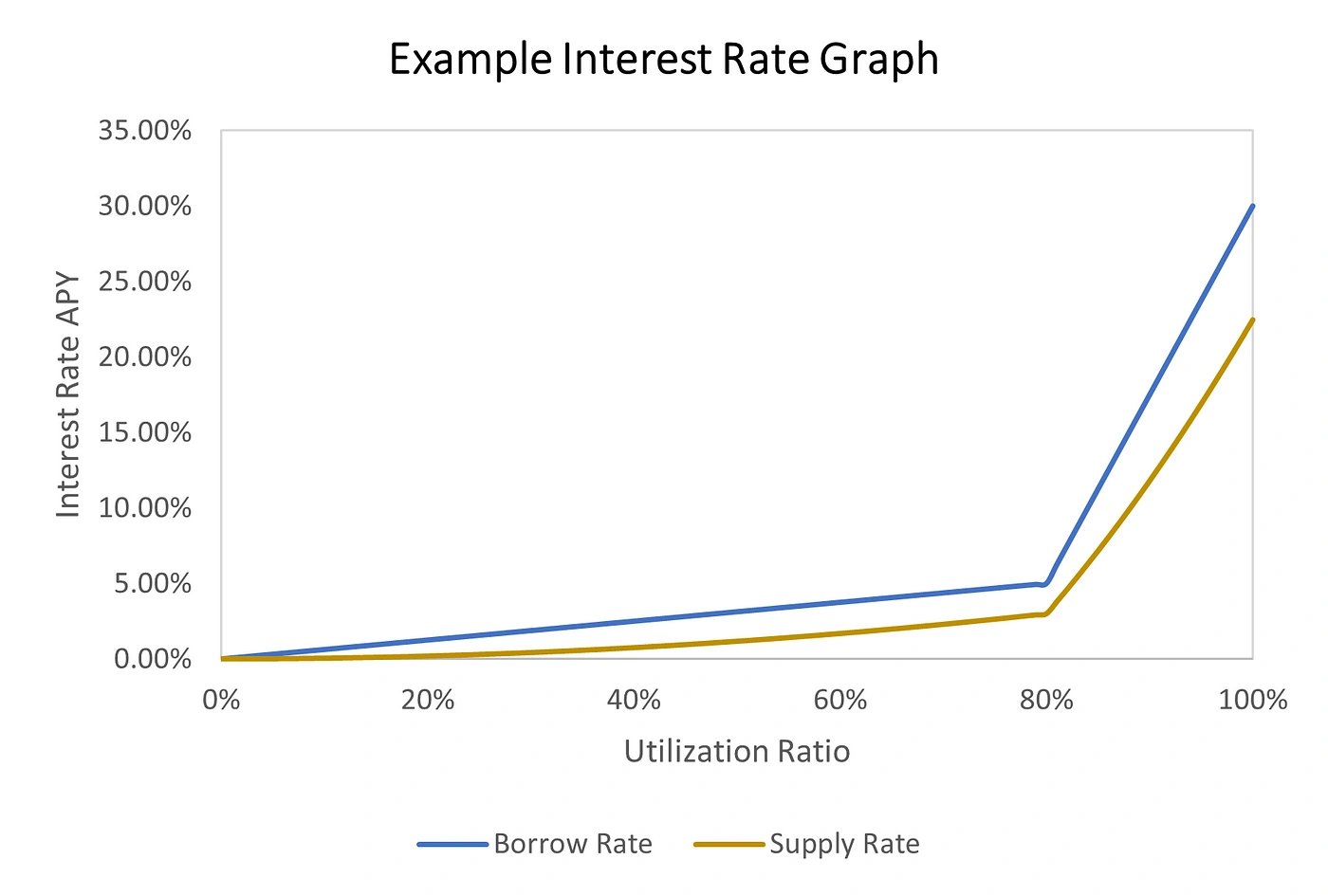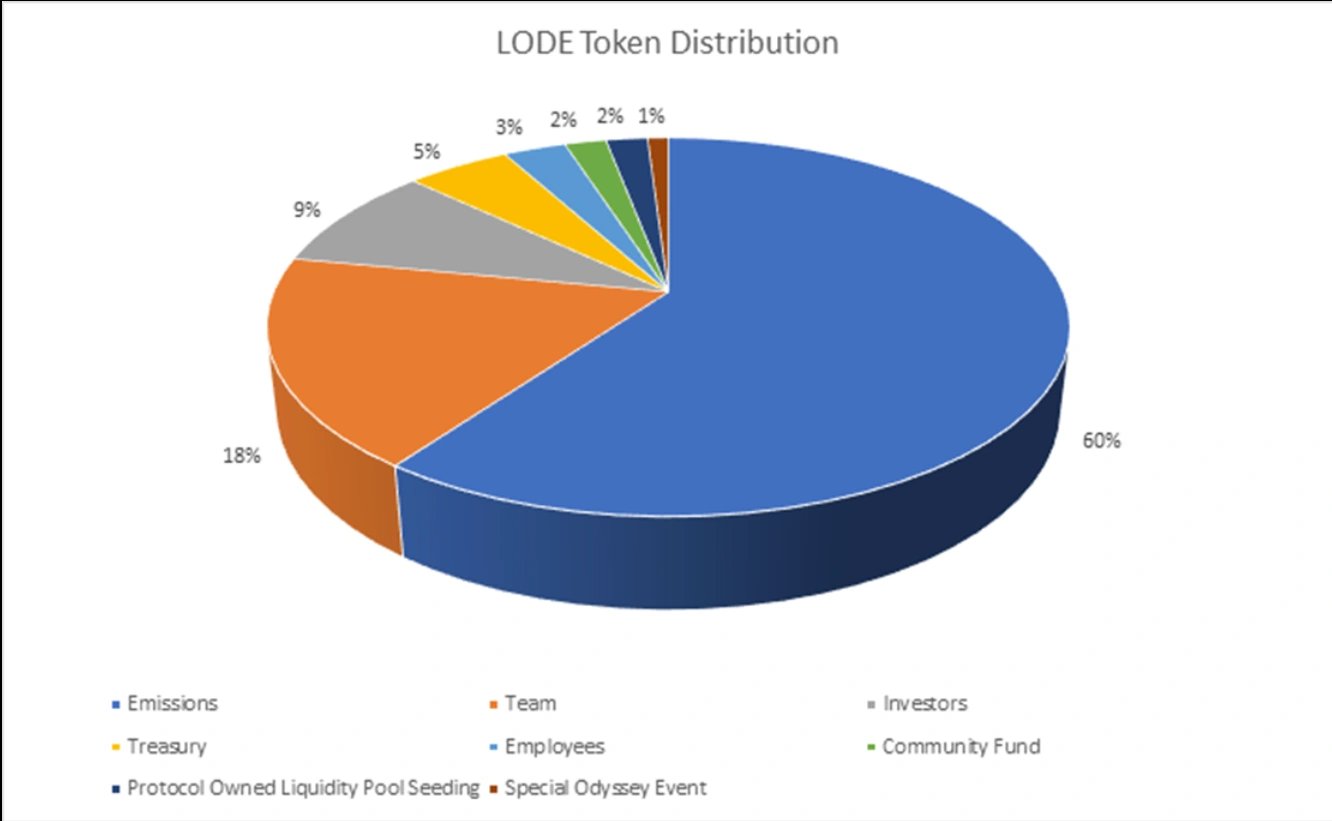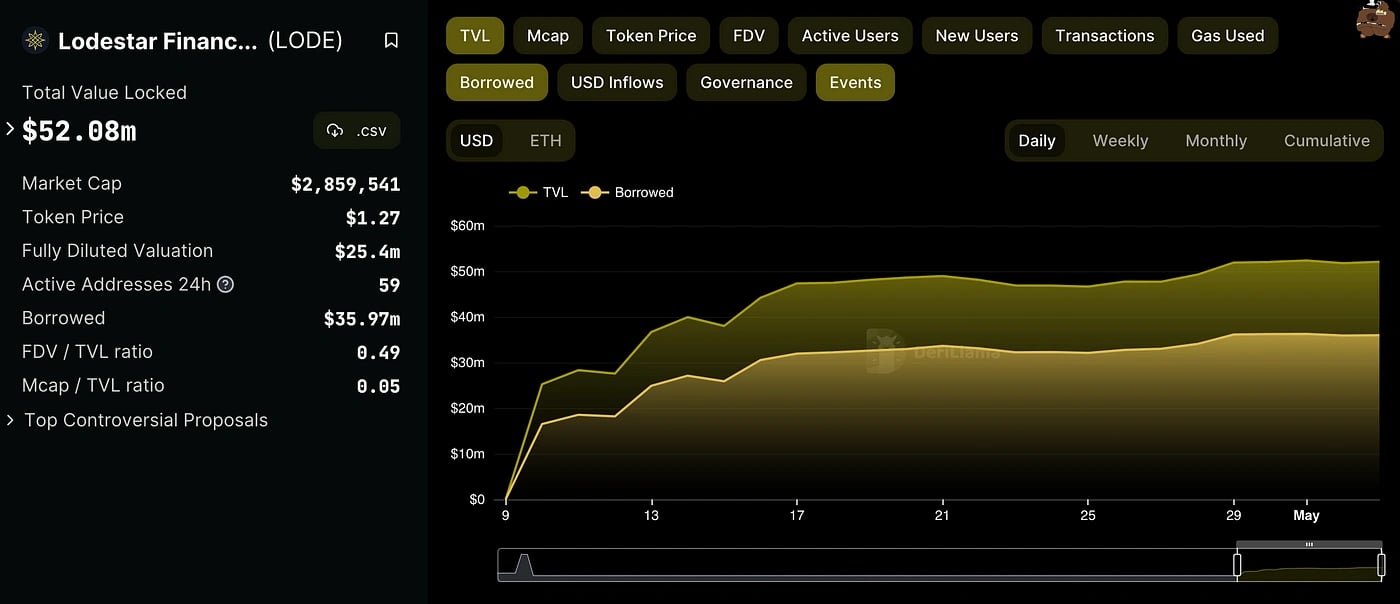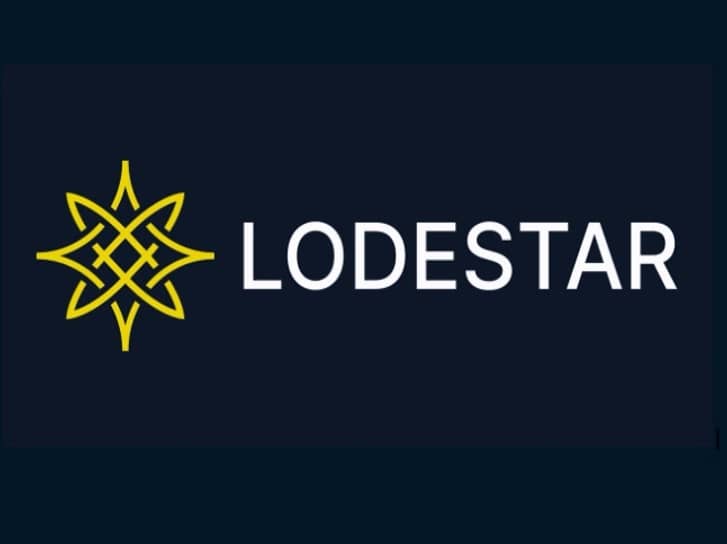위키 구독하기
Share wiki
Bookmark
Lodestar Finance
Lodestar Finance
Lodestar Finance(로데스타 파이낸스)는 사용자가 자산을 빌리고 빌려줄 수 있도록 하는 아비트럼(Arbitrum)(아비트럼) 기반의 알고리즘 머니 마켓 프로토콜입니다. [1][2][3][4]
개요
Lodestar Finance(로데스타 파이낸스)는 Arbitrum(아비트럼) 커뮤니티에 탈중앙화 자금 시장을 도입하도록 설계된 알고리즘 기반 대출 및 차입 프로토콜입니다. 이 프로토콜은 MAGIC, DPX, plvGLP와 같은 자산을 제공하여 이자를 얻는 기능, 담보(콜래터럴)를 통해 암호화폐(크립토커런시) 자산을 차입하는 기능, 과세 이벤트를 유발하지 않고 유동성에 접근하는 기능, 레버리지(레버리지) 거래 전략을 사용하는 기능, 기본 수익률을 희생하지 않고 수익률이 있는 자산의 유동성을 해제하는 기능 등 여러 가지 주요 기능을 제공합니다. [1][4]
Lodestar Finance의 목표는 신흥 Arbitrum 커뮤니티에 탈중앙화 대출 서비스를 확장하여 토큰 보유자와 DAO(DAO)에 부가가치를 창출하는 것입니다. Arbitrum 생태계가 발전함에 따라, 이 프로토콜은 협업을 위한 더 많은 커뮤니티를 발굴하고 필수적인 DeFi(DeFi) 인프라가 필요한 레이어 2(레이어 2) 네이티브 커뮤니티의 성장에 기여하는 것을 목표로 합니다. [1]
로데스타 파이낸스 유틸리티
로데스타 파이낸스는 사용자에게 전통적인 차입 및 대출뿐만 아니라 레버리지 수익 기회를 통해 전략을 더욱 활용할 수 있도록 합니다. [9]
로데스타 파이낸스를 통해 사용자는 롱 포지션을 취할 수 있습니다. 자산 가치가 USDC 대비 상승할 것이라고 예상하는 사용자는 자산을 로데스타 파이낸스에 예치하고 담보로 USDC를 차입하여 롱 포지션을 실행할 수 있습니다. 그런 다음 차입한 USDC를 사용하여 포지션 청산을 결정할 때까지 동일한 자산을 매수할 수 있습니다. [4]
그 시점에 사용자는 차입한 USDC 금액을 상환하고 자산을 회수해야 합니다. 이 포지션의 수익은 (USDC 대비 가치 상승으로 인한) 초과 자산 가치와 순 누적 이자(USDC 차입에 대한 이자 비용에서 담보 예치에 대한 이자 수익을 뺀 값)의 차이입니다. [4]
로데스타 파이낸스는 사용자에게 숏 포지션 옵션도 제공합니다. 사용자가 Bitcoin (비트코인)의 가치가 Ether (이더) 대비 하락할 것이라고 예상하는 경우 숏 포지션을 실행할 수 있습니다. 사용자는 로데스타 파이낸스에 ETH를 예치하고 담보를 사용하여 wBTC (랩트 비트코인)를 차입해야 합니다. 그 후, 포지션 청산을 결정할 때까지 wBTC를 ETH로 매도할 수 있습니다. [4]
그 시점에 사용자는 더 낮은 가격에 wBTC (랩트 비트코인)를 다시 매수하고 대출금을 상환할 수 있습니다. 이 포지션의 수익은 (wBTC 대비 ETH의 가치 하락으로 인한) 초과 ETH 가치에서 순 누적 이자 비용(wBTC 차입에 대한 이자 비용에서 ETH 예치에 대한 이자 수익을 뺀 값)을 뺀 값과 같습니다. [4]
주요 기능
자산 공급
Lodestar Finance에서 이자를 얻으려면 사용자는 토큰을 프로토콜에 예치하여 자산을 공급해야 합니다. 그 대가로 사용자는 기본 예치금을 나타내는 파생 상품을 받습니다. 예를 들어, USDC를 예치하면 동일한 양의 lUSDC를 얻게 됩니다. lUSDC/USDC의 환율은 기본 자산의 공급 이자율과 일치하는 비율로 블록 단위로 지속적으로 증가합니다. 이자는 블록 단위로 누적되며 풀의 활용도에 따라 동적으로 조정됩니다. 특정 블록에서 USDC 공급자가 2%의 연이율(APR)을 얻으면 해당 블록의 lUSDC/USDC 환율도 연간 2% 증가합니다. 사용자가 플랫폼에서 토큰을 인출할 때, 그들은 본질적으로 lUSDC를 USDC로 교환하는 것입니다. 환율 상승으로 인해 사용자는 원금과 누적 이자를 포함하여 초기 예치금보다 많은 USDC를 받게 됩니다. [14]
담보 자산 활용
프로토콜에 자산을 제공한 후 사용자는 자동으로 이자를 획득하기 시작하지만, 특정 활성화 없이는 토큰을 담보로 사용할 수 없습니다. 자산을 담보로 사용하려면 사용자는 시장 대시보드에서 담보 슬라이더를 토글하고 계약을 승인해야 합니다. 이러한 자산에 대한 차용은 제공된 원금과 담보 비율을 기반으로 하며, 담보 비율은 사용자가 특정 제공 자산에 대해 차용할 수 있는 최대 금액을 나타냅니다. 예를 들어, 사용자가 85%의 담보 비율로 100 USDC를 제공하는 경우 최대 85 USDC 상당의 다른 자산을 차용할 수 있습니다. 사용자가 여러 자산을 제공하는 경우 차용 한도는 가중 평균을 기준으로 계산됩니다. 85%의 담보 비율로 50달러의 USDC와 75%의 담보 비율로 50달러 상당의 WBTC를 제공하는 경우 최대 80달러를 차용할 수 있습니다. [15]
계정 유동성
여러 자산이 담보로 사용될 때 계정 유동성을 확인하려면, 해당 섹션에서 찾을 수 있는 Unitroller 계약 주소를 방문하여 자신의 주소를 getAccountLiquidity 메서드에 입력할 수 있습니다. 이 메서드는 현재 유동성에 대한 정보를 반환하는데, 이는 청산에 도달하기 전에 차입할 수 있는 최대 USD 가치를 나타냅니다. 계정이 청산에 들어가면, 부족분은 abs((원금의 USD 가치 x 담보 비율) - 차입 잔액)에 해당하는 USD 가치를 반영합니다. [15]
가격 정확도
Lodestar의 가격 정확도는 plvGLP를 제외한 모든 제공 자산에 대해 검증되고 안전한 가격 피드를 통해 달성됩니다. 정확한 가격은 최대 차입 이율을 계산하고 계정의 파산을 식별하는 데 매우 중요합니다. [15]
담보 요소
| 자산 | 담보 요소 |
|---|---|
| USDC.e | 0.82 |
| USDC | 0.82 |
| GMX | 0.7 |
| wstETH | 0.75 |
| ARB | 0.7 |
| USDT | 0.7 |
| FRAX | 0.75 |
| DAI | 0.75 |
| ETH | 0.8 |
| BTC | 0.75 |
| MAGIC | 0.5 |
| DPX | 0.15 |
| plvGLP | 0.75 |
자산 차용
Lodestar Finance 내에서 부채 포지션을 생성하고 관리하는 과정을 차용이라고 합니다. 담보를 제공한 후 사용자는 계정의 담보 요소에 의해 설정된 한도까지 자산을 차용할 수 있습니다. 총 차용 잔액은 현재 차용 금액과 발생 이자의 합계로 계산됩니다. 전체 계정 유동성을 차용하지 않는 것이 중요합니다. 그렇게 하면 즉시 청산될 수 있기 때문입니다. [16]
차입 금리
Lodestar Finance의 차입 금리는 사용자가 차입하는 자산의 현재 적용 이자율을 나타냅니다. 대출이 개시되는 모든 블록에서 블록당 차입 금리를 사용하여 다음 블록에 대한 사용자의 차입 잔액을 계산합니다. 이러한 차입 잔액의 지속적인 복리 계산은 각 이더리움 블록에서 발생합니다. 차입자는 언제든지 차입 잔액의 일부를 상환할 수 있습니다. 계정의 건전성 지수가 1.0에 가까워지지 않는 한 상환은 의무 사항이 아니며, 1.0에 가까워지면 잔액의 일부를 상환하거나 청산될 위험이 있습니다. [16]
차용 자산 상환
사용자는 플랫폼의 프런트엔드를 통해 또는 lToken 계약의 repayBorrow 함수를 통해 직접 차용 자산을 상환할 수 있습니다. 상환 시, 기존 lToken을 기초 자산으로 교환하여 사용자의 담보를 완전히 상환받을 수 있습니다. 공급 및 차용 양측의 가격 변동이 전반적인 건전성과 리스크 청산에 영향을 미칠 수 있으므로 차용자는 자신의 계정 건전성을 모니터링하는 것이 중요합니다. [16]
금리 모델
Lodestar Finance는 Compound의 점프율 모델에서 영감을 받은 독자적인 금리 모델을 사용합니다. 이 플랫폼은 기본 시장 위험 요소를 기반으로 고유한 매개변수를 갖춘 5가지 모델을 사용합니다. 이러한 모델은 각 기본 자산과 관련된 전반적인 위험에 따라 분류됩니다. [17]

금리 모델 1: 최소 위험
금리 모델 1은 USDC에 맞춰 설계되었으며, 효율적인 머니 마켓 운영을 위한 스테이블코인 유동성을 최적화하는 것을 목표로 합니다. 로드스타는 모델 1을 통해 Arbitrum에서 활기찬 수익률 생태계를 구축하고 스테이블코인 유동성을 주요 초점으로 삼고자 합니다.
- 공급자: USDC 공급자에게는 선도적인 DeFi 프로토콜과 동등하거나 그 이상의 경쟁력 있는 금리가 제공됩니다. 다양한 활용 수준에서 매력적인 금리가 유지됩니다.
- 차입자: 차입자는 위험 자산을 취급할 때 공급자가 감수하는 위험을 반영하여 약간 높은 금리를 부담합니다.
이자율 모델 2: 저위험
이자율 모델 2는 프로토콜 내에서 이더리움(Ethereum) 사용을 유도하기 위한 맞춤형 접근 방식이 필요한 이더리움에 중점을 둡니다.
- 공급자: 이더리움 공급자는 다른 DeFi 프로토콜에 비해 활용 곡선에서 더 높은 수익률을 경험합니다. 80%의 담보 비율로 담보물에 대해 더 많은 금액을 차용할 수 있습니다.
- 차용자: 차용자는 잠재적으로 위험한 자산을 다룰 때 공급자가 직면하는 위험으로 인해 약간 더 높은 금리를 경험합니다.
위험 중간 수준 금리 모델 3
금리 모델 3에는 wBTC(더블유비티씨), plvGLP, DAI(다이), FRAX(프랙스) 와 같이 우량 담보로 간주되지만 특정 위험을 고려하여 금리가 중간 정도 조정되는 자산이 포함됩니다.
- 공급자: 공급자는 이러한 자산에 대한 수익률을 얻고 우량 담보를 제공할 수 있습니다.
- 차입자: 차입자는 더 높은 금리를 부담하지만 이 모델의 많은 자산은 Arbitrum 생태계 파밍에 사용할 수 있습니다. 높은 이용률로 이러한 자산을 차입하는 것은 수익성이 있을 수 있습니다.
위험도 높은 이자율 모델 4
이자율 모델 4는 인기 있는 스테이블코인인 USDT와 MIM에 적용되며, USDC 및 FRAX에 비해 위험 조정 이자율이 더 높습니다.
- 공급자: 자산 공급률은 활용률이 0~80%인 경우 USDC 금리와 거의 일치합니다. 활용률이 80%를 초과하면 더 많은 공급자를 유치하기 위해 금리가 크게 증가합니다.
- 차입자: 활용률이 80%를 초과하면 차입자는 기하급수적으로 높은 이자율을 부담하게 되어 신속한 대출 상환을 강하게 유도합니다.
이자율 모델 4는 이러한 토큰과 관련된 위험이 더 높기 때문에 80% 활용률을 초과하는 경우 더 가파른 금리 인상을 도입합니다. 디페깅 이벤트 또는 극심한 시장 변동성은 건전하지 못한 활용 수준과 잠재적인 유동성 위기를 초래할 수 있습니다. [21]
이자율 모델 5: 최대 위험
이자율 모델 5는 DPX 및 MAGIC와 같이 가장 높은 위험이 수반되는 유틸리티 및 거버넌스 토큰에 적용됩니다.
- 공급자: 이러한 시장의 공급자에게는 기초 자산의 위험에 상응하는 공급률이 제공됩니다. 이러한 자산은 모델 4보다 더 큰 위험을 수반합니다.
- 차입자: 이러한 자산을 차입하는 차입자는 높은 이용률까지 수익성 있게 활용할 수 있습니다. DPX 및 MAGIC의 차입 및 스테이킹은 이용률 곡선의 상당 부분에서 실행 가능합니다.
80% 이상의 이용률에서는 이러한 곡선이 기하급수적으로 확장되어 이러한 토큰의 얕은 유동성 풀과 잠재적인 극심한 가격 변동을 반영합니다. Lodestar는 유동성 위기를 줄이기 위해 높은 이용률 시나리오에서 유동성이 공급되고 부채가 상환되도록 강력한 인센티브 조치를 사용합니다. [22]
준비금
이자 지급액의 일부는 로데스타(Lodestar)의 준비금으로 적립되며, 프로토콜의 안전장치이자 특정 시장을 위한 보험 풀 역할을 합니다. 이 준비금은 차입자로부터 발생하는 이자 수익의 일부로 조성되며, 로데스타가 매개변수로 결정합니다. 준비금은 해당 lToken 계약 내에 보관됩니다. 준비금은 이용률이 높은 기간 동안 프로토콜의 유동성을 강화하고 부실 채권 누적 위험을 완화하는 데 중요한 역할을 합니다. 또한 프로토콜 수수료 부과를 가능하게 합니다. [23]
준비금 계수
준비금 계수는 자산에 대해 발생한 이자 중 해당 자산의 준비금 풀에 할당되는 비율을 결정합니다. Lodestar는 기본 준비금 계수를 사용하며, 아래 표에 요약되어 있습니다. [24]
| 자산 | 준비금 계수 |
|---|---|
| USDC.e | 0.07 |
| USDC | 0.07 |
| GMX | 0.33 |
| wstETH | 0.2 |
| ARB | 0.2 |
| USDT | 0.07 |
| FRAX | 0.07 |
| DAI | 0.07 |
| ETH | 0.2 |
| BTC | 0.2 |
| MAGIC | 0.33 |
| DPX | 0.33 |
프로토콜 레이크
프로토콜은 시장 준비금에 예치된 모든 자금에 레이크를 부과합니다. 준비금의 50%에 해당하는 이 레이크는 $LODE 스테이커에게 이익이 되는 수익원을 창출합니다. 스테이킹이 활성화될 때까지 준비금의 100%는 풀 내에 남아 있습니다. 프로토콜은 reduceReserves 함수를 통해 준비금에서 자금을 인출할 수 있습니다. [25]
청산
계정 건강도
Lodestar는 "건강도"라는 매개변수를 통해 계정 건강도를 평가합니다. 이 매개변수는 다음 공식을 사용하여 계산됩니다: ((ETH로 표시된 총 담보 가치) / (ETH로 표시된 총 차입 가치)). [26]
계정 건강도는 ETH로 표시된 총 담보 가치와 총 차입 가치를 모두 고려하여 계정의 전반적인 상태를 나타냅니다. 담보 가치는 각 자산에 대해 제공된 담보의 총 가치로 결정되며, 차입 가치는 각 자산의 차입 잔액을 ETH로 환산한 값으로 산출됩니다. 차입자의 계정 건강도가 1 미만으로 떨어지면 파산 상태가 됩니다. [26]
계정 건전성 유지
파산 및 잠재적 청산을 방지하려면 차용자는 계정 건전성 지수를 1.0 이상으로 유지하는 것이 중요합니다. 계정이 파산하면 다른 사용자가 미상환 차용 잔액의 일부를 상환하고 대가로 계정 담보의 일부를 받을 수 있습니다. 청산자는 차용자의 담보에 대해 8% 할인을 받고, 청산된 담보의 2.8%는 프로토콜 준비금에 배정되어 청산자가 플랫폼 건전성을 지원하도록 유도합니다. [26]
청산 및 청산인
청산인은 파산 계정을 청산하기 위해 LiquidateBorrow 함수를 실행하는 역할을 합니다. 청산인은 차용자의 주소, 상환 및 담보로 전환될 차용 자산의 금액, 그리고 차용자가 담보로 보유한 lToken의 주소를 지정합니다. 단일 거래에서 청산될 수 있는 최대 금액은 프로토콜의 Close Factor가 0.5로 설정되어 있으므로 특정 자산에 대한 사용자의 현재 차용 잔액의 50%입니다. 계정이 파산 상태를 유지하는 경우, 용제성이 회복될 때까지 추가 청산을 거칠 수 있습니다. [26]
LODE
$LODE는 Lodestar Finance(로데스타 파이낸스)의 거버넌스 토큰이며 총 토큰 공급량은 2천만 개입니다. [5]
토큰 경제학
런칭 시점에 총 공급량의 60%는 에미션(Emissions)에, 18%는 팀(30개월 베스팅, 1년 클리프)에, 9%는 투자자(커뮤니티 프리세일)에게, 5%는 재무부(Treasury)에, 3%는 직원에게, 2%는 커뮤니티 펀드에, 2%는 프로토콜 소유 유동성 시딩(protocol Owned Liquidity Seeding)에, 1%는 특별 아비트럼 오디세이 이벤트(Special Arbitrum Odyssey Event)에 배분되었습니다. [5]

유틸리티
LODE는 보유자의 DAO(다오) 지분을 나타내는 거버넌스 토큰(거버넌스 토큰)입니다. 토큰 보유자는 플랫폼을 관리하는 제안에 투표할 수 있으며, 투표권은 토큰 지분에 비례합니다. 제안은 온체인 투표를 진행하기 전에 DAO(다오) 구성원 간에 논의되어야 합니다. [5]
LODE 토큰 보유자는 스테이킹(스테이킹)을 통해 ETH(이더리움)로 지급되는 프로토콜 수수료의 비례 지분을 얻을 수 있습니다. 프로토콜은 시장의 준비금에 할당된 모든 토큰의 50%를 LODE 스테이커에게 배포합니다. [5]
LODE는 또한 주간 게이지 투표에 사용되어 LODE 스테이커는 다음 주 시장에 대한 배출량 할당에 투표하는 데 사용할 수 있는 거버넌스 권한을 얻습니다. [5]
스테이킹
Lodestar Finance에서의 스테이킹을 통해 사용자는 자신의 $LODE 토큰을 스테이킹 계약에 락업할 수 있습니다. 토큰을 스테이킹함으로써 사용자는 스테이킹 파워를 얻게 되며, 이를 통해 프로토콜 수익의 일부를 얻고 주간 게이지를 통해 프로토콜의 발행량에 영향을 미칠 수 있습니다. [10]
선택적 락 (Locking)
Lodestar의 스테이킹 모듈의 일부는 사용자가 토큰을 락하여 추가적인 스테이킹 파워를 얻을 수 있는 옵션을 제공합니다. 토큰을 3개월 동안 락하도록 선택하면 사용자의 스테이킹 파워가 1.4배 증가합니다. 6개월 락의 경우 스테이킹 파워는 두 배(2배수)가 됩니다.
재락킹 승수
사용자는 에포크 종료 시 토큰을 재락킹하여 스테이킹 파워에 대한 추가 승수를 얻도록 선택할 수도 있습니다. 재락킹으로 얻는 승수는 재락킹 기간에 따라 달라집니다.
- 3개월 재락킹은 0.05x 승수를 제공합니다.
- 6개월 재락킹은 0.1x 승수를 제공합니다.
이러한 승수는 시간이 지남에 따라 복리로 적용되므로, 특히 6개월 이상 토큰을 지속적으로 재락킹하는 사용자는 시간이 지남에 따라 상당한 스테이킹 파워를 축적할 수 있습니다. [10]

Lodestar Finance 해킹
2022년 12월 10일, Lodestar Finance(로데스타 파이낸스)는 플래시론 공격을 받았습니다. 공격자는 PlutusDAO(플루투스다오)의 plvGLP 토큰 가격을 조작하여 인플레이션된 토큰을 이용, 플랫폼의 모든 유동성을 빌렸습니다. [6]
트위터 스레드[7]에서 Lodestar(로데스타)는 공격 과정을 설명했습니다. 공격자는 먼저 plvGLP 계약의 환율을 1.83 GLP/plvGLP로 조작했는데, 회사는 이것만으로는 수익을 낼 수 없는 공격이라고 밝혔습니다. 그런 다음 공격자는 Lodestar(로데스타)에 plvGLP 담보를 제공하고 이용 가능한 모든 유동성을 빌려 일부 자금을 현금화했습니다. "담보 비율 메커니즘이 plvGLP의 완전 청산을 막을 때까지"입니다.
해킹 이후, "여러 plvGLP 보유자들도 이 기회를 이용하여 1.83 GLP/plvGLP로 현금화했습니다." 해커는 300만 GLP 이상을 소각하여 "Lodestar(로데스타)에서 훔친 자금에서 소각한 GLP를 뺀" 이익을 얻었습니다. DeFi 플랫폼은 이렇게 언급했습니다.
공격자는 약 580만 달러의 이익을 얻었습니다. Lodestar(로데스타)는 약 280만 GLP(약 240만 달러)를 회수할 수 있다고 밝히며, 이를 예금자에게 상환하는 데 사용할 것이라고 했습니다. 회사는 또한 공격자와 버그 바운티 협상을 시도했습니다.
"만약 당신이 해커라면, 연락 주십시오. 화이트햇 계약을 맺고 넘어갈 수 있도록 하겠습니다. 사용자 자금 회수가 최우선 과제이며, 협조에 대해 후하게 보상하겠습니다." - Lodestar Finance(로데스타 파이낸스) 트윗[8]
2023년 10월 기준, Lodestar(로데스타)는 plvGLP 금고에 남은 GLP를 사용하여 해킹 피해자들에게 손실액의 약 1/3을 상환했으며, 추가로 75만 esLODE를 할당하여 피해자들에게 상환했습니다. [28]
esLODE 스테이킹
2022년 12월 익스플로잇(exploit) 피해를 입은 사용자는 esLODE를 청구할 수 있었습니다. [10]
esLODE는 프로토콜 수익을 얻기 위해 스테이킹할 수 있으며 1년에 걸쳐 LODE로 선형적으로 전환될 수 있습니다. 일단 스테이킹되면 언스테이킹할 수 없습니다. esLODE가 LODE로 전환되면 스테이킹 잔액에 추가됩니다.
LODE가 3개월 또는 6개월 동안 락업(lock)되는 경우, 전환된 LODE도 락업 보너스의 혜택을 받지만 락업 기간의 나머지 기간 동안에도 락업됩니다. [10]
아르비트럼의 로드스타(Lodestar)
2023년 4월 8일, 로드스타 파이낸스(Lodestar Finance)가 아르비트럼 블록체인에서 출시되었습니다. 이 프로토콜은 예치금과 차입금을 합쳐 3천만 달러가 넘는 TVL을 유치했으며, 지급된 이자로 2만 3천 달러가 넘는 수익을 창출했습니다. [11][12]
프로토콜 출시 후, 2023년 5월 1일, 로드스타 파이낸스에 $ARB를 배포하는 거버넌스 제안이 제출되었습니다. 대다수의 LODE 보유자들이 찬성표를 던졌고, 그 결과 2023년 5월 7일 ARB 예치가 가능해졌습니다. [12]
"$ARB 예치가 @LodestarFinance에서 활성화되었습니다. 유동성 제공을 시작하려면 http://app.lodestarfinance.io로 이동하세요. 차입은 몇 시간 안에 활성화될 예정입니다." - 로드스타 트윗[13]
잘못된 내용이 있나요?
